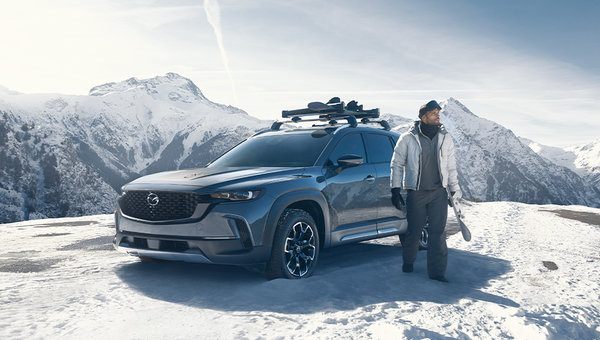A DEEP DIVE INTO MAZDA’S SKYACTIV TECHNOLOGY
December 09 2020, Yorkdale Dufferin Mazda

Some aspects of a car are immediately visible to the naked eye, while others you only feel when zooming along. Mazda’s SKYACTIV vehicle technology is palpable to any passenger, and especially for drivers!
Yorkdale Dufferin Mazda has tons of new Mazda cars on the lot with SKYACTIV technology, but sometimes reading about tech helps heighten your appreciation.
Let’s take a look at some of the history behind Mazda’s patented approach to combustion engines and at some of the recent innovations that drivers worldwide have come to love.
INNOVATION IN HIROSHIMA
In the years after WWII, Hiroshima rose from the horrors of the atomic bomb to once again become a hub of manufacturing. This is where Mazda cars began to make ground-breaking innovations, like the commercial rotary engine.
On the quest to improve further, Mazda opted to rebuild the fundamentals rather than stuff vehicles with fancy bells and whistles. The result: gasoline and diesel engines that deliver outstanding performance and fuel efficiency.
This ground-up approach to rebuilding vehicles is now known as SKYACTIV vehicle architecture.
SKYACTIV G VERSUS SKYACTIV D
Today’s drivers have their choice of SKYACTIV engines. While built on the same principles, you can choose from gasoline and diesel engines.
The SKYACTIV D engine has the world’s lowest diesel-engine compression ratio, making it 20% more fuel-efficient. This clean and highly-efficient diesel engine meets the strictest international exhaust regulations without requiring expensive nitrogen oxide after-treatment systems.
The SKYACTIV G also achieves a compression ratio of 14.0:1. Thanks to its high compression combustion rate, this gasoline engine is 15% more fuel-efficient and delivers a significant boost in torque. Mazda always refines its technology, and the significant improvements made to the engines in recent years is a testament to the automaker’s commitment to quality.
THE PURSUIT OF JINBA-ITTAI
Jinba-Ittai is a Japanese phrase translating roughly to the connection between the road, the vehicle, and the driver. Mazda seeks to heighten the sense of oneness between these three things by improving their vehicles’ transmission, chassis, and body.
SKYACTIV-VEHICLE DYNAMICS technologies power this sense of control on the road. Smoothing out the transition between G-Force when braking, turning, and accelerating creates a unified dynamic performance feel.
Known as G-Vectoring Control, or GVC, this technology was the first technology in the SKYACTIV-VEHICLE DYNAMICS series. The first breakthrough was the decision to use the engine to enhance chassis performance. Today, it’s the first technology to adjust engine torque in response to steering inputs, controlling these forces in a unified way to smoothen out the vehicle’s performance and improve its efficiency.
Canadian drivers will love driving a vehicle with GVC in all seasons, as it improves handling and control when roads are wet or snowy. On a basic level, this technology will simply make the drive more comfortable for you and all your passengers.
Vehicles have improved the technology under the hood in countless ways since Mazda launched its SKYACTIV technology, and they continue to refine the major parts every year. Whether you want to enjoy Mazda’s 100th anniversary celebration or celebrate Christmas, visit Yorkdale Dufferin Mazda for a test drive so you can experience SKYACTIV technology for yourself!




